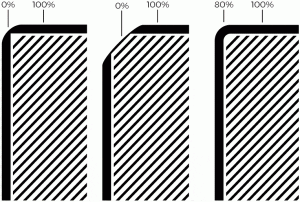MOISTURE IS ONE OF THE BIGGEST THREATS FACING EXTERNAL JOINERY AND ITS PERFORMANCE. DOORS THAT SWELL AND GET STUCK, AND TIMBER THAT EXPANDS AND CONTRACTS THROUGH THE CHANGING SEASONS, ARE CONSTANT CHALLENGES FACING JOINERY MANUFACTURERS. QUERCUS’ PARTNER COMPANY, REMMERS, SHARE SOME INSIGHT INTO PRODUCTS AND METHODS OF IMPROVING PERFORMANCE.
We recently wrote about the risks associated with changes in moisture content and their effects on external joinery. Now, our partner company Remmers has put together an informative document to help you understand methods which combat this threat. Remmers are the experts when it comes to understanding protection and performance coatings with their innovative solutions which make a positive impact on Joinery Products. You can read what they have to say below:
Induline Woodcoating systems, incorporating selfcross-linking acrylates coating technology, help enhance the performance of external joinery products, to protect against the constant exposure that the UK environment delivers from the leafy suburbs of middle England to more exposed coastal locations.
Our Premium Induline systems, including end grain & construction joint sealers, have a long service life performance, high permanent elasticity and permanent protection against moisture. Modern Windows & Doors produced to current industry standard (compliance with BS 644), incorporate design detail to work with and extend coating performance.
Microporous – “A barrier to liquid water but allows water vapour to pass through”. In waterborne coating technology, part of the microporous nature is achieved by creating a minimum coating film thickness. The Induline systems promote this to be in the region of 100 μm dry film thickness.
Why coating performance is improved where soft edges are incorporated

The illustration shows how the coating film build is affected by a sharp edge detail. Creating a chamfer reduces the acute angle of the sharp edge, but introduces a second edge. The coating film created over a 3 mm radius edge is 80%. Linking this with the minimum coating film thickness, an applied film of 120 μm on the face of the joinery would achieve a coating film of approximately 95 μm.
Water tension continues to be maintained at a sharp edge detail (wherever present). This is commonly seen on projecting cills and bottom beads. During periods of rainfall, a solid edge of water retention can be seen along the front edge, 25 – 30 mm wide. Such water retention creates high levels of wetting of the timber around an area of low, to no, coating film build, greatly increasing the instability of the substrate and commonly leads to premature coating failure.
Other areas of general focus to promote moisture exclusion: - sealing construction joints such as projecting cill to frame, glazing methods to prevent penetration of water into the rebate of the supporting frame, excluding water traps, flat surfaces or insufficient water shedding angle to meet climatic conditions, tight operating gaps and poor installation to prevent capillary draw of water. Building design protection to protect joinery to include stone cills to reduce projection on timber cills, setting the frame back in the building façade and extended roof overhand to minimise the impact of water deluge. The latter being particularly important where rainwater guttering is not adequately performing or not in place.
Further advice can be obtained from the Remmers Woodcoating technical team at www.woodcoating.co.uk

